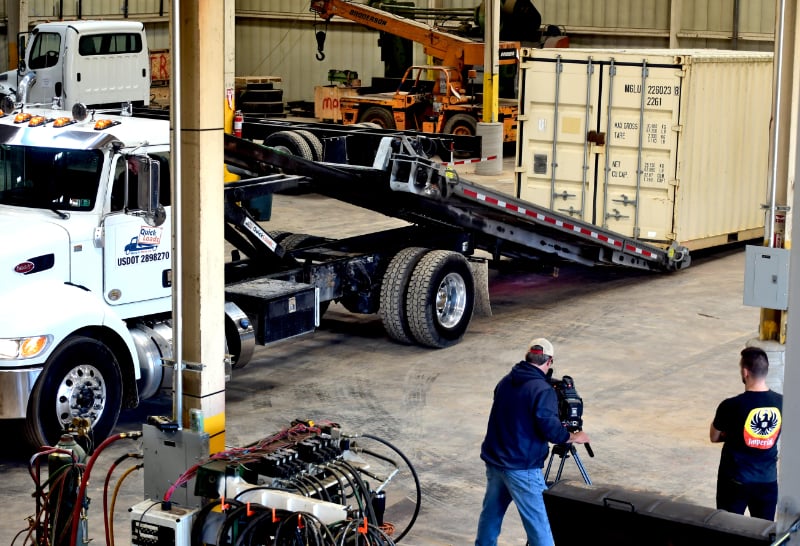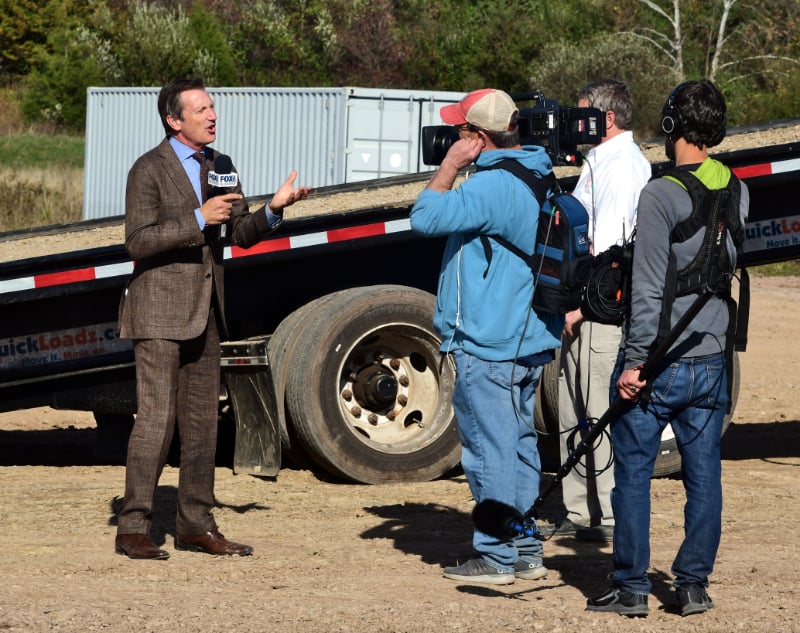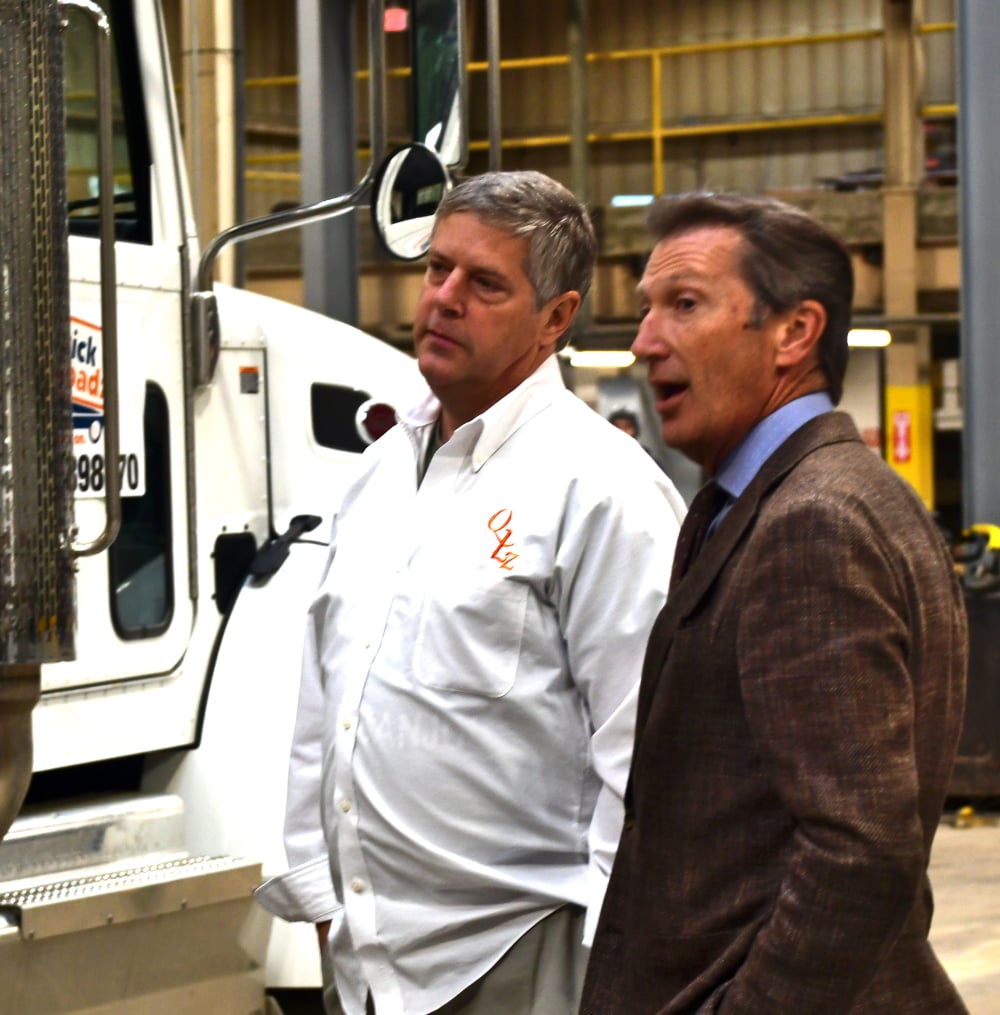
You may have seen “America’s Sweethearts,” the 2001 movie about the life of a motion picture publicist.
To most people it is a cute and funny romantic comedy. To anyone who has ever been in the publicity business, it is a documentary.
I say this as someone who has worked as a publicist from time to time during a meandering career. For every win there are a hundred losses; for every time a release or press contact results in serious coverage there are scores of “news” releases that might as well have been sent directly to the spam directory.
Over the course of a once-typical, now-weird career, my work has sometimes been as the writer of news releases for a large publicity company. Occasionally I’ve taken on a whole account. Interspersing this through my real jobs of reporting, in which publicists are ground to dust when they’re not ignored entirely, has always felt a little strange, as if serving one day on the firing squad and the next day as the execution’s guest of honor. It’s important always to remember which one you are today. You can guess which I’d rather be.
Oh, and things can and do go spectacularly wrong. In 1993 I was asked to publicize an event announcing a cooperative enterprise involving a top-of-the-charts musician and his very famous then-wife, and a mostly beloved world leader. What was that enterprise? I don’t know, and I don’t think I ever knew. (In retrospection, I’m not sure anybody ever knew.) Anyway a big theater in New York was rented for the announcement, and there was a satellite link to the West Coast (a very expensive thing at the time), and it was all going to be spectacular. I sent out releases. I phoned reporters. I did, I think, pretty much everything that could be done. And . . .
Nobody showed up. The whole thing was a dismal failure. The project was to the best of my knowledge never heard of again (which, given the rollout, means it was never heard of in the first place). The music star and his model wife divorced. The world leader now tends his roses or something. I don’t think it was my fault, but they might disagree.
Some years later I was press agent for a group of clients that included a well-known touring band. It was a grind for all involved: I’d send releases to the media in advance of appearances. Some newspapers would request interviews. Some radio stations would want in-studio interviews, preferably with the guys bringing their instruments. The guys complained about answering the same questions from different mouths day after day. They were right.
The concerts were well attended, though I cannot prove that my efforts and theirs ever sold a single ticket. Then one day I heard about a hardware store in upstate New York that was decorated in homage to the band — the owner was a real fan. As it happened, the band was to play Poughkeepsie, the nearby city, in a few days. An idea was hatched: We’d have the tour bus roll up, unannounced, and the guys would get out and go shopping at the hardware store, surprising its adoring owner. By some miracle, we were able to keep it secret; I told a reporter for the Poughkeepsie Journal and his photographer about it, of course, but otherwise we kept it on what has come to be called the down low. And it all came together perfectly. The result was a front-page lead story in the biggest paper in town. Everyone loved the band because of it.
Publicity is a game of percentages, and the percentages aren’t very high. But when it works it can be magical.
Why mention all this now? Well . . .
You may have heard of a worldwide problem with something called the supply chain. It boils down to this: stuff needs to get from here to there, where it will be made into other stuff or distributed to stores and consumers, which itself requires that it get from one place to another. Only that’s not happening. The stuff is getting clogged along the line as ships loaded with shipping containers bob offshore while the containers that do get unloaded make it no farther than the ports, with no one to carry them away to warehouses that are full anyway, so the containers can’t be moved off the trailers carrying them. When it works, it is an efficient system with very little waste. When it gets interrupted, the effects extend far beyond the shipping industry. It inconveniences — or worse — us all.
As I followed news of the supply chain troubles, I thought of QuickLoadz, a company local to me, with which I’ve been familiar since before it was a company. Sean Jones owned a storage business that employed shipping containers. He discovered there was no easy way to manipulate them. He invented a way to do just that. He then developed it into a system of truck beds and trailers with which one operator, the truck’s driver, can robotically load and unload containers at ground level, the whole process taking less than five minutes. There was and is nothing like it, and he has gotten patents on the design.

Warehouse full? No problem: the beauty of QuickLoadz is that it doesn’t require a warehouse, or cranes, or forklifts, or loading docks. All it needs is access to a piece of ground big enough to hold a shipping container. (It’s also really cool: It hooks to the container and instead of dragging it aboard it lifts the container and drives the truck or trailer under it, which is easy on the containers and easy on their contents. And because it doesn’t use a winch, all that’s necessary to unload the container is to reverse the process, unlike vaguely similar products that do only half the job.) When Hurricane Harvey hit Texas in 2017, Sean put a container on the asphalt of a local business-district parking lot and people here were invited to donate tools and construction supplies, bottled water, and other necessities. He then picked up the loaded container, drove it to Texas, learned where the supplies were most needed, and deposited the container there. The people who needed them were getting them within minutes of his arrival, while other shipments on lesser systems waited for days just to get unloaded.
I pondered all this in light of the shipping crisis and was wondering how attention might be drawn to QuickLoadz as a solution, but before I mentioned it Sean got in touch with me. He had the same idea.
Hmmm. The Fox Business Network has been hot on the supply chain story. It also has some reporters who — get this — go out and report. So I dropped them a note about QuickLoadz, explained how the company could ease some of the problem, and invited them to come round and do a story. I made the suggestion to no other media company and, cherry on top, said the system is so easy to use that the reporter himself could operate it, even on live television if he wanted.
Given the percentages, I figured I’d hear nothing back, or maybe a canned “Thanks for thinking of us. Maybe some other time.” But no: within a couple of hours I had a note back from Jeff Flock, one of the best in the business, saying that he’d like to come, spend the day, and do a series of live reports.

Feeling a little like the dog who chased the car and caught it, I forwarded the note to Sean and we began to prepare. This meant sweeping the place out because company was coming, but also arranging for there to be food for the crew, shore power (I mistakenly thought) for the satellite truck (guess what? It’s all cellular and wi-fi now — no need to use the bird), and every contingency we might imagine. Except for the sweeping and the food, it turned out to be unnecessary. We would be visited by real pros.
I spoke by phone with the capable Marc Smith, a Fox producer in New York. We’d plan for the cameraman and audio guy to show up at the QuickLoadz assembly line at noon Monday, November 8, to shoot b-roll and to make sure that the cellular signal was strong enough to carry a full real-time, high-definition video signal.
The cell system was fine, it turned out, and QuickLoadz is, to our surprise, so photogenic that the guys uploaded an hour of b-roll Monday afternoon. (B-roll, by the way, is all that interesting video that is played over live reports or as part of pre-recorded packages. The crew filmed all kinds of sparks being made, the water jet doing its amazing work, two dozen busy workers doing their complicated tasks, and the QuickLoadz system loading and unloading containers. It was gratifying to get a sense of it from people who were seeing it for the first time.)
The next day Jeff Flock and the crew arrived for the live “hits.” Live television and the news flow are such that they didn’t know how many times he’d go live, or when, or, given the possibility of a big story, if. Television news must always over-prepare, and this was no exception. planning initially to go during the 8 a.m. hour, QuickLoadz made air at 10:42. But it was a great report, on Stuart Varney’s show, and I’m told that the QuickLoadz website got far more than the usual number of hits, and the phones were pretty busy, too. A statistic I saw said that nearly 700,000 people watched that first report.
Jeff Flock forced me to revise my view of television people, many of whose competency ends at the ability to comb their own hair. He’s not that kind of television reporter. The guy he is off camera is the same guy he is on the air: friendly, cheerful, and intensely interested and willing to be amazed. He wanted to understand the story thoroughly before explaining it to others. As a result, his reports don’t pander but are nevertheless accessible to viewers who don’t have specialized knowledge.
(My view has long been that the lone justification for being a reporter is a desire to get a metaphorical front-row seat and the willingness then to go tell everyone else what you saw. That carries the implied commitment to understand yourself what you saw and to be able to distill it into a report which accurately conveys that understanding. It’s not easy and I think that most of the time the attempt isn’t even made. Few are good at it. Jeff Flock has mastered it, which I guess shouldn’t be a surprise: he was at CNN for 25 years, when it really was “the most powerful name in news,” and has been at Fox Business for the many years since, with an intervening stop at PBS. He’s an exceptionally good reporter and the nicest guy in the world. Lucky is the station that would nab him as its news director. Or the university that would hire him to be head of their broadcast news school, though as I said he’s a nice guy and I wouldn’t wish that on him.)

The first report was followed by a hit on Neil Cavuto’s program, at about 12:30 p.m. The final report came during the Liz Claman show, at about 3:30. It’s online, so you can watch it here.
Everybody then packed up and went home, Jeff to Philadelphia and the crew to, I believe, Columbus. Networks now typically hire local crews rather than sending employees all over the place, though of course they have their own crews and equipment for emergencies, disasters, and events in the places they have bureaus.
For once, everything went right. Now I can return to my reportorial life.
It is so good when things in the publicity world work out the way you hoped.
Because most of the time, they don’t.

Dennis E. Powell is crackpot-at-large at Open for Business. Powell was a reporter in New York and elsewhere before moving to Ohio, where he has (mostly) recovered. You can reach him at dep@drippingwithirony.com.
You need to be logged in if you wish to comment on this article. Sign in or sign up here.
Start the Conversation